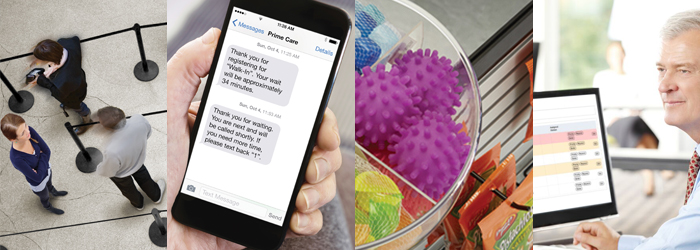
The Service-Cost Balancing Act of Managing Waiting Lines
When the demand for a service exceeds the amount of service that can be provided, waiting lines result. While it’s nearly impossible to avoid the development of a queue, there are ways to minimize its length and the resulting wait times. Managers must balance the level of service they’re prepared to offer to combat a lengthy waiting line against the cost of providing the service. But the question of what can be “afforded” should be looked at in a few different ways:
A higher level of service will naturally cost more up front but can end up lowering costs in the long run.
While it may be inexpensive to cut down on service in the short run (with barebones staffing or fewer service stations, for example) this choice could incur monumental costs over time. Namely, customer dissatisfaction, the loss of future business, and even the cost required to process customer complaints. A higher level of service will naturally cost more up front but can end up lowering costs in the long run. Either way, the service-cost control is a balancing act – a trade-off management has to carefully consider when determining what the optimal level of service is for their operation, be it a retail environment, fast-food establishment, or transportation hub. As a manager, you have the power to change the characteristics of your waiting lines to impact service and cost. Reflect on the following queue management considerations, noted by professors at California State University Sacramento:
Impact customer arrival rates
People are creatures of habit and will typically shop or run errands during particular windows of time. However, you can attempt to alter arrival rates and attract customers by offering discounts or running promotions during non-peak hours. You’ll be able to prepare for lengthier lines during these hours, and expect that shorter lines will be the result during the off-hours of the special.
Vary the number and type of service stations and servers
Whether you operate on a single-line or multi-line queue with multiple servers, the number of service stations and servers can be increased or decreased to satisfy demand and reduce long lines. Consider a grocery store – it’s possible to open more registers to accommodate a rush of customers, offer self-checkout lines, cash-only lines, or limited-item lines (e.g., 10 items or less).
Change the number of phases
Multi-phase systems work well in places such as the DMV where servers specialize in a portion of the total service. One server checks a customer in, a second server facilitates the bulk of the encounter, and even a third server can handle the cash portion of a transaction if need be. This set-up reduces the number of tasks that a server needs to learn or know, thereby improving server proficiency at their specific station, increasing the speed of customer turnaround, and reducing the customer wait.
Increase server efficiency
A few small process changes or enhancements, or the dedication of additional resources, can improve server efficiency and make a waiting line move much more quickly. Consider the grocery store example – cashier accuracy and speed can improve through scanners, or handheld, checkout-as-you-go tools that put the customer partially in charge of their own transaction. Even adding a grocery bagger at each cashier station can speed up the rate at which customers flow through a line.
Consider the priority rule
In queuing, the priority rule determines what person should be served next. First-come, first-served is the most typical and accepted method of priority service, and it is considered to be the most fair. Changing the priority rule could very well shorten lines overall, but inexplicably offering preferential or VIP treatment to some customers may cause more problems and dissatisfaction in the long run. Consider the impact that a priority rule change could have on the customers who would not benefit from this shift.
Change the number of lines
When concern about customer fairness is the biggest issue on the table, changing from a multi-line, multi-server setup to a single-line, multi-server queue can solve a great deal of queue problems. There will be less jockeying among customers to get in the “best” line. Customers will all feel like they’re “in it together,” that no other customer is getting preferential treatment, and the chance of getting in the “wrong” line is eliminated. A single-line queue can also be enhanced with the addition of call-forward electronic queuing which helps a line move more quickly by alerting customers which server is available. LCD screens can also be utilized to entertain and distract customers while they wait in line, thereby reducing their perceived wait. Each of these considerations can help managers alter the performance of a queue and create the optimal service-cost balance in a waiting line. Furthermore, queue management technologies enable retailers and other service environments to closely monitor the ebb and flow of customers and queues to ensure a waiting line is no longer than need be. Consult with a Lavi expert to design your approach.
SUBSCRIBE
Subscribe to stay up-to-date with new products, resources information and news.
RECENT RESOURCES
Theft at the Register: How Strategic Queue Design Protects Profits
ViewRapid Deployment Crowd Control: JetTrac Portable Barriers For The Biggest Spaces
View4 Psychological Reasons Your Customers Hate Waiting In Line
ViewFrom Bleachers To Bookstores: 4 Campus Crowd Control Solutions
View








